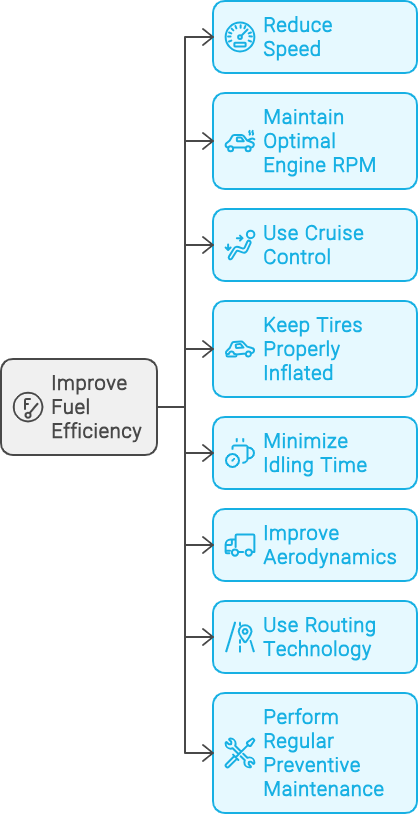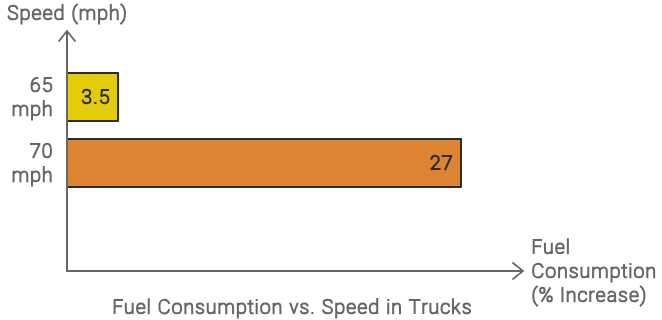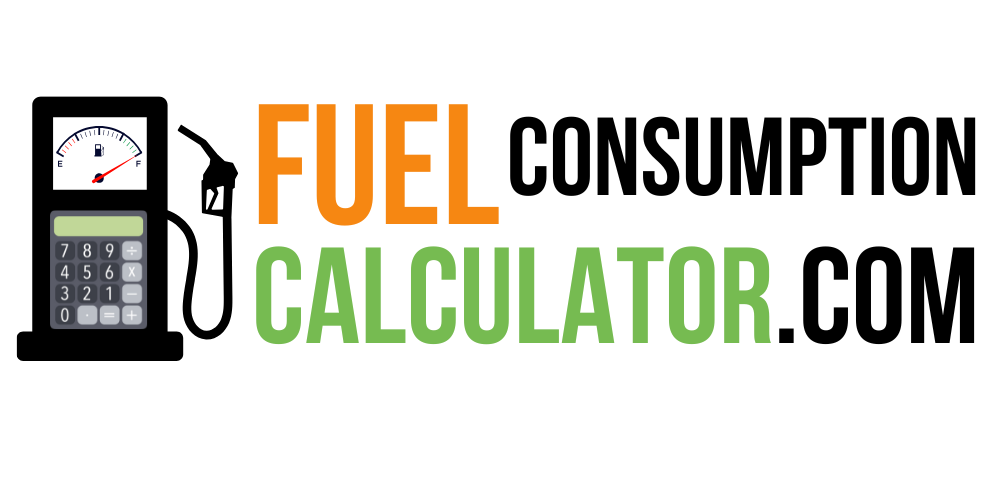Fuel costs are a big burden for truck owners and fleet managers. Diesel prices are now about $4.28 per gallon, and they might not drop much by late 2023. So, finding ways to improve your truck’s fuel efficiency is crucial.
Let’s explore how to get better gas mileage in your truck and save on fuel costs.

Contents
1. Reduce Speed for Substantial Fuel Savings
According to the American Trucking Associations (ATA), speeding is a major contributor to excessive fuel consumption in trucks. Here’s why slowing down matters:

- Driving 1 mph over 65 mph can reduce fuel economy by 0.14 mpg.
- A truck traveling at 75 mph uses 27% more fuel than one going 65 mph.
- Capping speeds at 65 mph could save the trucking industry $2.8 billion in fuel costs over 10 years.
Fuel Savings at Different Speeds:
Speed ReductionPotential Fuel Savings75 mph to 65 mphUp to $170 per 1,000-mile tripAbove 65 mph to 55-65 mph20% or more improvement in fuel economy
Pro Tip: Use cruise control to maintain a steady, efficient speed and potentially reduce fuel consumption by up to 6% during a trip.
2. Optimize Engine RPM for Peak Efficiency
Finding your engine’s “sweet spot” can lead to significant fuel savings. Here’s what you need to know:
- The optimal engine RPM range for most trucks is between 1,250-1,350 RPM.
- Lower RPMs generally result in less fuel consumption.
- Engines are designed for high torque and low RPM operation.
According to a study by Energy and Environmental Analysis, Inc., managing engine RPM effectively can improve fuel economy by 4.1%.
3. Maintain Proper Tire Inflation
Proper tire inflation is crucial for fuel efficiency. The National Highway Traffic Safety Administration (NHTSA) provides these insights:
- Fuel economy drops by 0.2% for every 1 psi under recommended pressure.
- Properly inflated tires can improve gas mileage by 0.6% to 3%.
- Underinflated tires increase rolling resistance, reducing MPG.
Tire ConditionFuel Efficiency ImpactUnderinflated0.6% to 3% decrease in MPGProperly Inflated0.6% to 3% increase in MPG
Pro Tip: Regularly check and maintain proper tire pressure to optimize fuel efficiency and tire longevity.
4. Minimize Idling Time
Excessive idling wastes fuel and money. The Argonne National Laboratory reports:
- Truck idling in the U.S. consumes up to 1 billion gallons of fuel annually.
- This costs the trucking industry about $3 billion per year.
- A semi-truck can burn up to 0.8 gallons of fuel per hour while idling.
Strategies to Reduce Idling:
- Educate drivers on the importance of reducing idling.
- Implement and enforce anti-idling policies.
- Install idle reduction technologies.
- Use telematics systems to monitor and reduce idling behavior.
- Incentivize efficient driving practices.
5. Improve Aerodynamics
Enhancing your truck’s aerodynamics can significantly boost fuel efficiency. Consider these modifications:
Aerodynamic ModificationPotential Fuel SavingsSide Fairings/Cab ExtendersUp to 4%Roof Fairings and SpoilersApproximately 3-5%Trailer TailsAround 6% at 65 mphWheel CoversModest savings
Pro Tip: At speeds over 50 mph, a 2% reduction in aerodynamic drag translates to a 1% improvement in fuel efficiency.
6. Utilize Routing Technology
Advanced routing and telematics systems can significantly improve fuel efficiency:
- UPS saved 10 million gallons of fuel using route optimization software.
- U.S. Xpress improved mileage and reduced out-of-route driving by 1% to 2% with technology.
- Paragon’s software has shown the potential to reduce fleet size by up to 20% while maintaining delivery levels.
7. Perform Regular Preventive Maintenance
Regular maintenance is crucial for optimal fuel efficiency:
- Address issues like brake drag, seized brakes, and clogged filters promptly.
- Keep up with oil changes and use the right fuel and oils.
- Update software as recommended by manufacturers.
By implementing these strategies, truck drivers and fleet managers can significantly improve fuel efficiency, reduce costs, and contribute to a more sustainable trucking industry. Remember, small changes can lead to substantial savings over time, benefiting both your bottom line and the environment.

Hi, I’m Sufiyan, the developer behind this platform. I created FuelConsumptionCalculator.com to simplify fuel tracking for everyone — because understanding your vehicle shouldn’t require a degree in mechanics. I’m always working on adding more tools and content to make this site even more useful

